In an early April event on campus, a multidisciplinary group of experts addressed the problem of coastal sustainability within global and local contexts.
Building an Urban Rain Garden
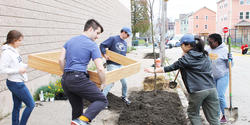
As Providence faced one of its wettest springs in recorded history, students in Urban Farm: Learning from Community Garden Practices, a studio led by Architecture faculty member Laura Briggs BArch 84, partnered with local organizations to design and build a rain garden. The bioswale and tiered planter garden they created captures stormwater, takes pressure off existing drainage systems, promotes biodiversity and provides a focal point for community engagement.
On May 10—just before clouds dumped another downpour—students worked with local nonprofit Southside Community Land Trust (SCLT) to build a six-foot-deep bioswale and then worked with Groundworks RI, Trinity Square Together and the Providence City Forestry Division to install the last of three large-capacity wooden planters on the city’s South Side.
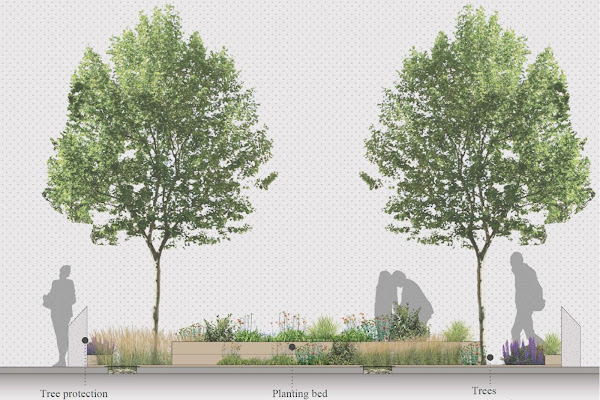
“We actually installed it right before a huge storm and the system didn’t flood or clog, which was a relief,” says third-year Architecture student Enrico Giori BArch 21.
What makes the project unique, he adds, is the size and depth of the bioswale (essentially a ditch lined with gravel to collect and distribute rainwater), which provides enough water to nourish full-size maple trees. “And the design and selection of plants was all decided on collectively with members of the community,” adds new Interior Architecture graduate alum Anuradha Soman MA 19. “Projects like this cannot succeed without buy-in from the community.”
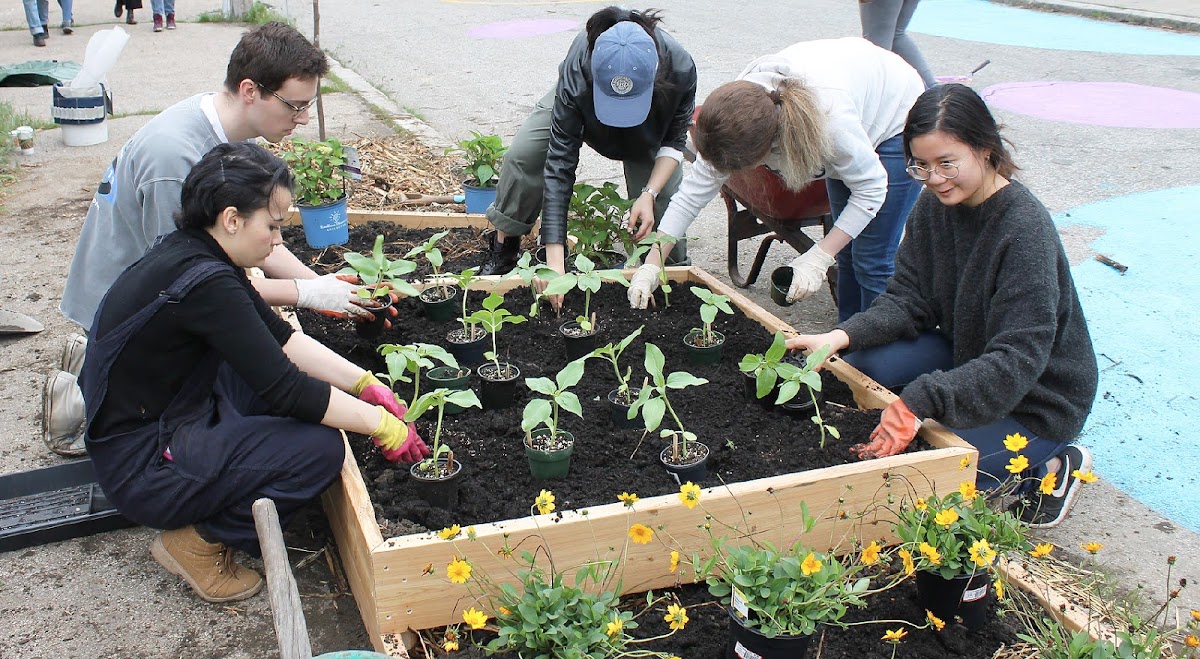
“The design as well as the selection of plants was all decided on collectively with members of the community.”
Faculty members in Architecture have long partnered with city officials and local nonprofits, but this collaborative effort to promote green infrastructure was particularly rewarding, according to Briggs. “We built on a model established in low-lying cities like New Haven, CT that received Hurricane Sandy funding to conduct research,” she says, “and it all came together really smoothly.”
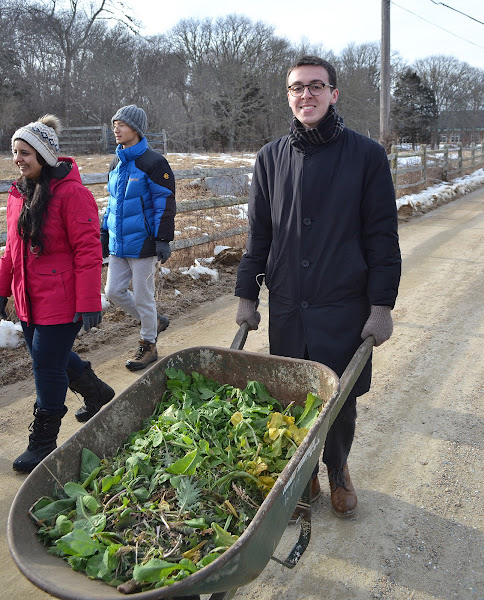
Earlier in the semester, students examined successful urban farming operations across the US, studying best practices for working with government officials, engaging with community members and collaboratively developing creative place-making strategies. “We visited organic and permaculture farms and studied ecological principles such as energy conservation, low-impact systems and materials that maximize energy and water efficiency,” says Briggs.
“No matter what you’re building, [you have to think] about the people you’re making it for.”
Soman studied the Edible Schoolyard Project launched by chef Alice Waters in Berkeley, CA, which teaches middle school kids how to grow and cook with their own organic vegetables. Since 2009 the organization has gone on to train 900 teachers, administrators, nutritionists, community leaders and parents, working with more than 350 schools worldwide. “It was interesting to see how some projects—like the one in Berkeley—were embraced by the community,” says Giori, “while others faced a lot of pushback.”

Local community members seemed to immediately recognize the long-term benefits of the rain garden, and as Soman points out, an SCLT team of volunteers agreed to assume the responsibility of ongoing maintenance. “SCLT’s youth garden is right across the street from our site,” Giori adds, “so they know which plants can thrive in the environment without the need for a greenhouse and which flowering plants support bees and other pollinators.”
In addition to supporting biodiversity, the garden includes labels for the trees, grasses and flowering plants, providing an educational model for future SCLT projects. In selecting what to plant, students opted for fast-growing and weed-resistant species and considered what the garden will look like in every season. “And the beds are stepped to elevate low-growing plants and create greater soil depth for plants that need it,” Giori explains.
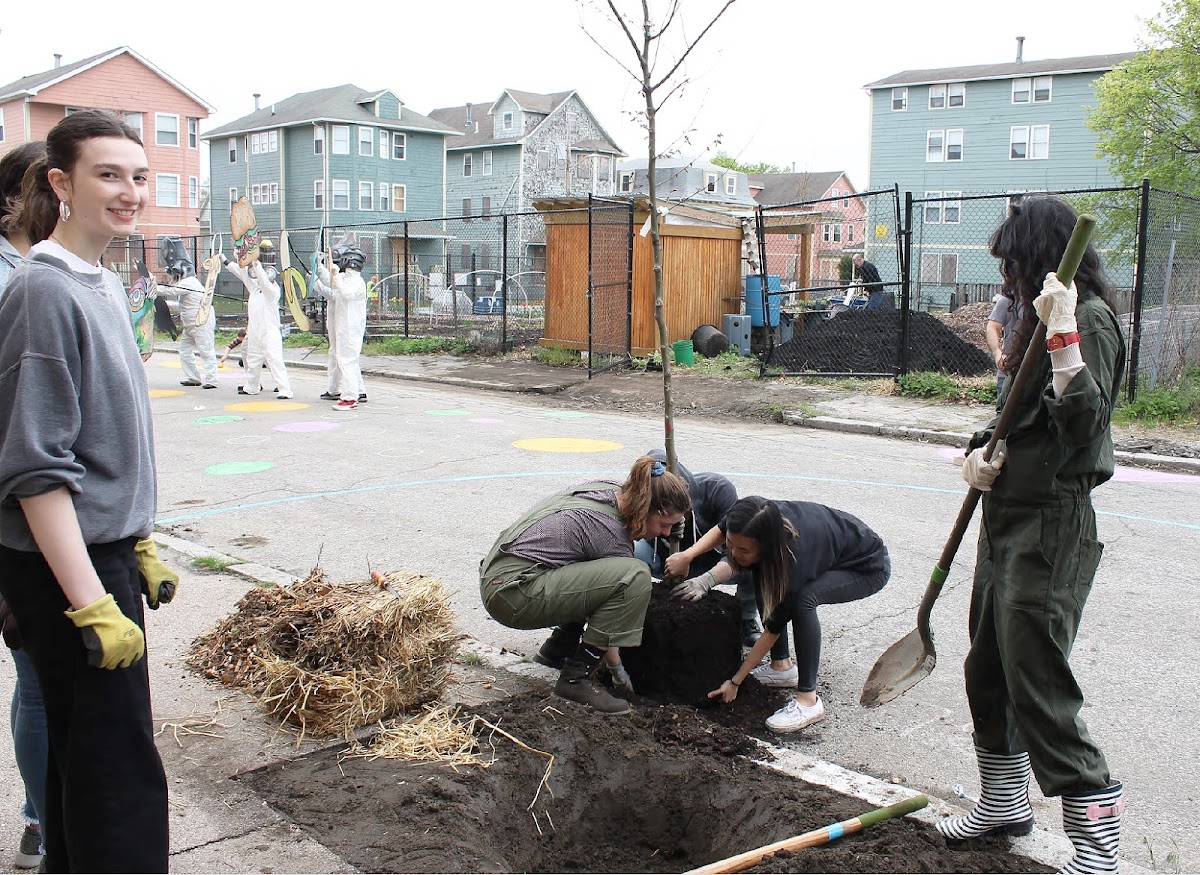
Students worked with local youth to design and construct decorative yet effective concrete bollards to protect the young trees they planted from cars and snow plows. “The bollards are low and feature angled tops to discourage people from sitting on them, since community members expressed concerns about loitering,” says Giori.
Given the positive response to the project, Providence is planning to introduce similar urban gardens elsewhere this fall. “The key takeaway for me,” says Giori, “is that the most important thing is meeting the needs of the neighborhood—that no matter what you’re designing and building, you’re thinking about the people you’re making it for.”
—Simone Solondz
June 4, 2019
